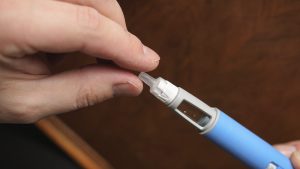In today’s fast-paced society, mental wellness has become an increasingly important topic of discussion. It has become even more crucial as individuals are faced with a range of challenges and stressors that can impact their mental health.
Exercise has long been touted as a key component of physical health and its benefits for mental health well-being have become increasingly recognized as well. In fact, the very chemicals that are released by our body during exercise could hold the key to improving our mental well-being.
Have you heard of ‘hope molecules’?
Scientifically known as myokines, ‘hope molecules’ are secreted by our skeletal muscles in response to any movement or muscle contraction. These small proteins are responsible for many health benefits associated with physical activity including improved metabolism, reduced inflammation, increased muscle strength and in recent studies, improved mental health.
The link between ‘hope molecules’ and mental health wellness
Myokines were referred to as ‘hope molecules’ because they have the ability to cross the blood-brain barrier and work at the brain level to help it recover from stress. A 2014 study showed that higher levels of myokines released during exercise can influence mood disorder symptoms and protect rodents from post-traumatic stress disorder. In the brain, myokines can act as an anti-depressant, help increase our brain’s resistance to stress, and increase motivation.
Brain-Derived Neurotrophic Factor (BDNF)
One myokine that has received particular attention for its mental health benefits is the brain-derived neurotrophic factor (BDNF). BDNF has been shown to have neuroprotective effects on the brain, promoting the growth and survival of neurons (brain cells). Furthermore, research has shown that BDNF possesses potential antidepressant and anxiolytic effects. Studies have found that individuals with major depressive disorder had lower levels of BDNF compared to healthy controls, and treatment with antidepressants has been shown to increase BDNF levels. This suggests that increasing levels of myokines like BDNF may be the key to preventing the development of depression.
While the discovery of myokines is still relatively new, their potential health benefits have already been well documented. Regular exercise has been shown to increase the production of myokines in the body, which may help to reduce inflammation, improve metabolic health, and promote overall physical and mental well-being.
Other brain benefits of physical exercise
You might be familiar with the term ‘runner’s high” – the feeling of happiness, relaxation, and reduced stress levels during and after a run. Exercise promotes the production of natural mood boosters such as endorphins, dopamine, and serotonin, creating a feeling of contentment and satisfaction.
Beyond the short-term ‘feel good’ benefits, regular exercise can also help to improve memory and cognitive function in the long term. Exercise increases blood flow to the brain, which in turn improves oxygen and nutrient delivery to the brain cells. This increased blood flow can improve cognitive function, attention, and memory recall. A study at the University of British Columbia found that regular aerobic exercise appears to boost the size of the hippocampus, the brain area involved in verbal memory and learning.
Furthermore, exercise has also been shown to help prevent and treat neurological disorders such as Alzheimer’s disease and Parkinson’s disease. Studies have shown that exercise can help to reduce the risk of developing these disorders by up to 45%.
From improving memory and cognitive function to preventing and treating neurological disorders, exercise is a powerful tool for promoting overall brain health. On top of these, we’ve now learnt about the positive effects of hope molecules that are released with every muscle contraction we make.
Learn how to activate your ‘hope molecules’
The Singapore Health Promotion Board recommends at least 150 to 300 minutes of moderate-intensity aerobic activity per week, and to strengthen muscles, bones and joints through different activities, at a moderate or vigorous intensity, at least two days a week.
If you are unable to picture yourself enjoying anything physical, the good news is that all muscles can produce myokines. Whether you go for a gentle stroll, lift weights, run a marathon, or even pick up your broom to simply sweep the floor, you’re essentially giving yourself a dose of ‘hope molecules’. Regardless of your age, gender and level of fitness, it’s never too late to start moving and give yourself a mental boost.
References
- Agudelo LZ, Femenía T, Orhan F, et al. Skeletal muscle PGC-1α1 modulates kynurenine metabolism and mediates resilience to stress-induced depression. Cell. 2014;159(1):33-45.
- Lin CC, Huang TL. Brain-derived neurotrophic factor and mental disorders. Biomed J. 2020;43(2):134-142.
- ten Brinke LF, Bolandzadeh N, Nagamatsu LS, et al. Aerobic exercise increases hippocampal volume in older women with probable mild cognitive impairment: a 6-month randomised controlled trial. Br J Sports Med. 2015;49(4):248-254.
- De la Rosa A, Olaso-Gonzalez G, Arc-Chagnaud C, et al. Physical exercise in the prevention and treatment of Alzheimer’s disease. J Sport Health Sci. 2020;9(5):394-404.












